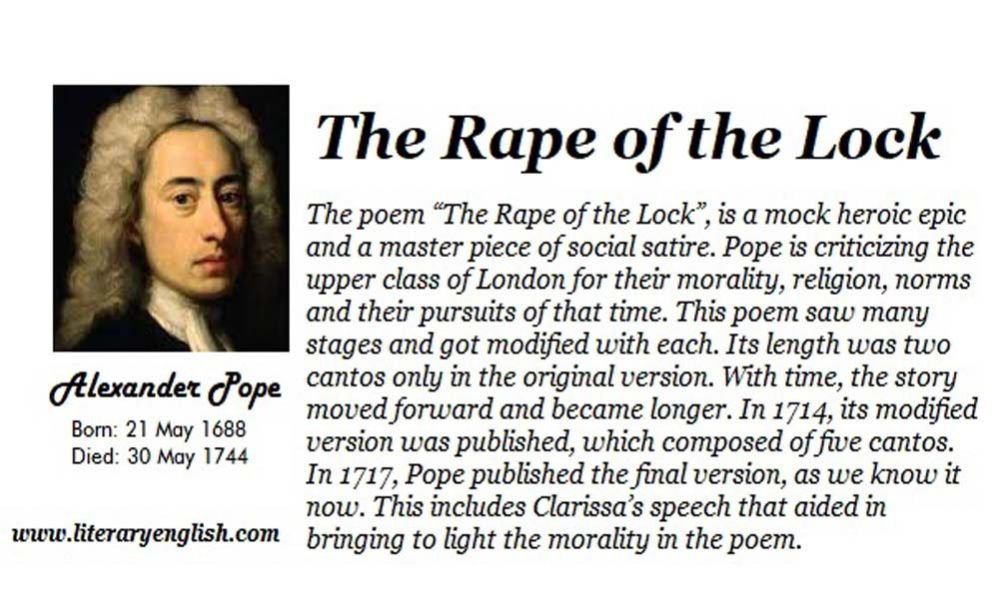The poem “The Rape of the Lock”, written by Alexander Pope, first became available for public reading in 1712. The poem is a mock heroic and Pope is criticizing the upper class of London and their ways of that time. This poem saw many stages and got modified with each. Its length was two cantos only in the original version. With time, the story moved forward and became longer. In 1714, its modified version was published, which composed of five cantos. This version did really well in market and sold thousands of copies in first few days. In 1717, Pope published the final version, as we know it now. This includes Clarissa’s speech that aided in bringing to light the morality in the poem.
Belinda is the central character of the narration. Baron, her suitor, cuts off a lock of her hair at a social occasion. As small as the incident seems to most people, this event leaves Belinda aggrieved. Both the people concerning the occasion belong to aristocratic recusant Catholic families and that at a time where rules in England are extremely strict. Therefore, the incident of cutting a lock of hair without permission leads to a huge argument. It became a matter of dishonoring. This created such infringement between the two families that were close and friendly before. Pope narrates the incidents of this night that caused the occurring of this loss for Belinda, in the poem.
The story of “the Rape of the Lock” was in fact a true incident that happened between two people, of which Pop’s friend, John Caryll told him. Belinda was actually Arabella Fermor and Baron was Lord Petre, who was her suitor. On his friend’s request, to calm down the situation, Pope wrote this epic, including supernatural creatures and comparing the two worlds of heroism and social. Throughout the poem, he put emphasis on how trivial this one event was and how much conflict it had caused between the two families.
By the time the latest version was completed, a lot had changed of the two families. Arabella got married and Lord Petre died by falling ill to small pox. Therefore, the clash that was to settle down by this poem had already ended and was of no significance then.
In, 1714 Pope wrote “A Key to the Lock” to warn people wittily to not take the poem so genuinely.
